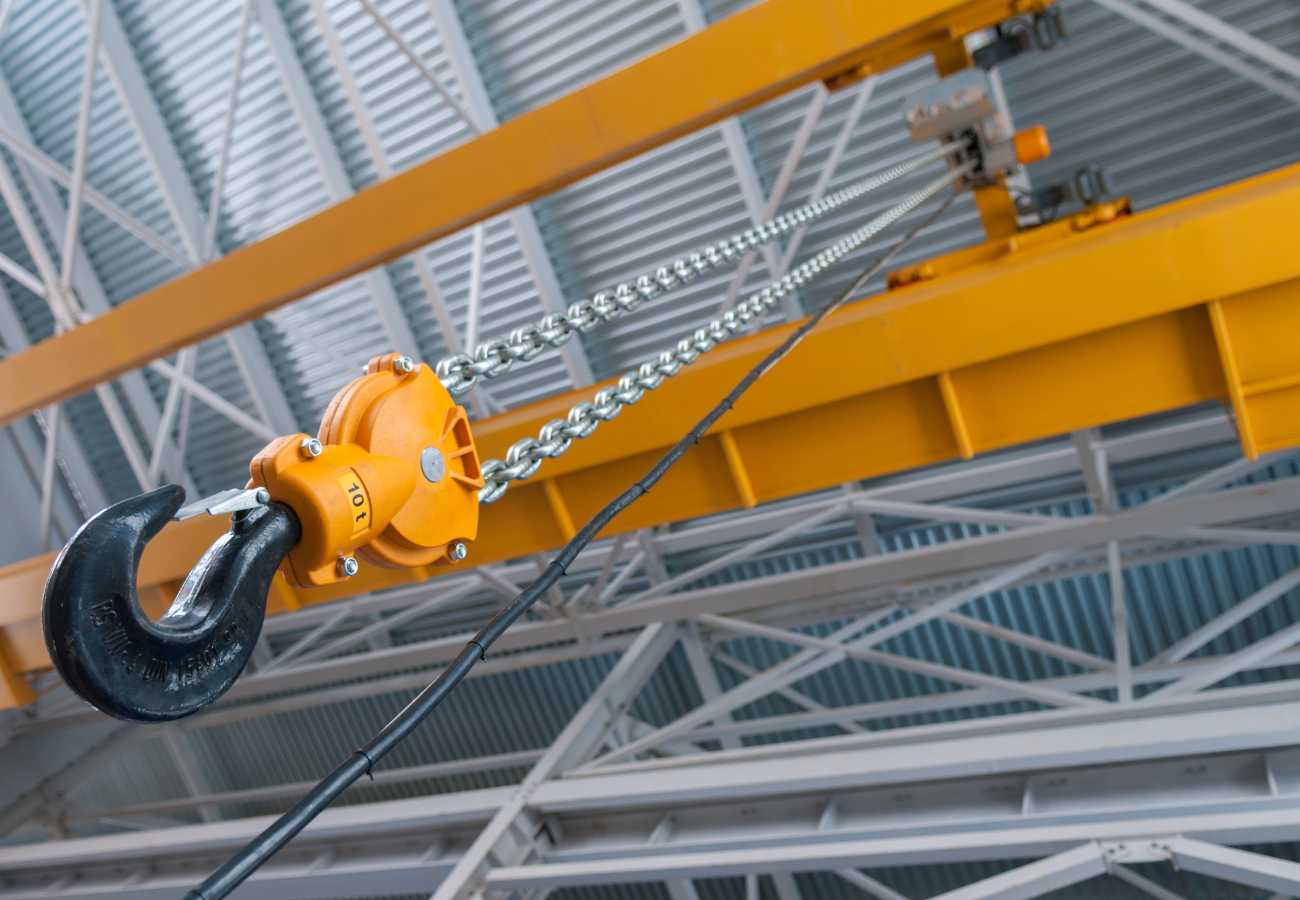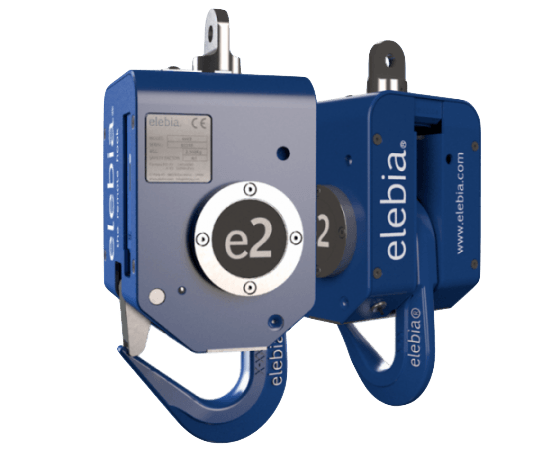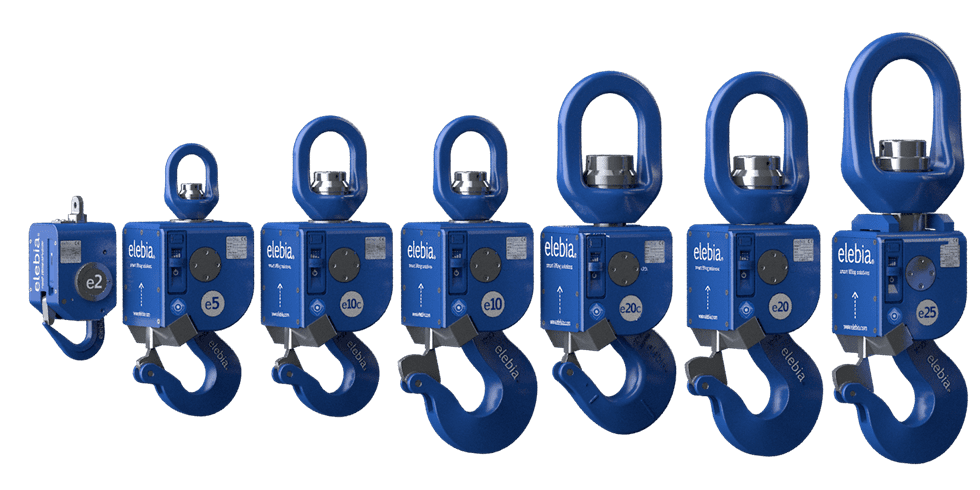A-Z of the Lifting Industry
5 October, 2021 - Editorial Team
The construction, shipping, wind, nuclear, aerospace, energy, manufacturing, steel industries (and many, many more) all make use of advanced mechanical devices, including a broad spectrum of cranes and hooks. These tools and machines are often referred to using industry-specific, specialized language. This can make it hard to understand the purpose of a particular device. To help you better comprehend the operational context and specific functions of our smart lifting solutions, we have compiled a thorough glossary of lifting industry terms. Maybe we’ve missed a few as there are endless possibilities, but we’re sure you’ll find clarity in the below definitions.

Glossary of Lifting Industry Terms
A
Aerial Crane
Otherwise referred to as sky cranes, aerial cranes are designed like helicopters, meant to lift large cargo from one location to the other. They are mostly used to transport large loads to hard-to-reach areas where conventional cranes might not reach. They are also instrumental to the lifting industry in lifting loads to high-rise buildings and commercial centers, provided the cargo is within their lifting capacity.
All-terrain Crane
This crane is a perfect hybrid combination of a rough-terrain crane and a truck-mounted crane. It is easy to maneuver and can easily be driven on the roads but still manage to maneuver through rocky landscapes. It is a piece of preferred heavy-duty machinery because of its versatility and the fact that it can handle up to 1,300 tons.
Automatic Hook
An automatic hook attaches to a crane or hoist and can be used to grab and lift loads remotely. This enables operators to maintain a safe distance and improves the productivity of the crane the hook is attached to. Automatic hooks can be opened and closed using a remote control and can be used with cable slings, chains slings, master links, textile slings and even big bags.
B
Bell Furnace
Characterized by a moveable dome top, bell furnaces are a type of furnace used in batch or intermittent industrial processes. They are commonly used to heat treat sheet products but can also be used for lower temperature sintering or drying. Typical bell furnace operation procedure involves heating of the furnace via an electrical or gas heater before using a crane to move the dome to cool on a stand.
Below-the-Hook
A Below-the-Hook lifting device is classified as a device used for attaching a load to a hoist. Rigging is the primary form of BTH lifting devices which include but are not limited to: chains, hooks, shackles and load rings. … The most common type of BTH lifting device are lifting beams.
Big Bags
A flexible intermediate bulk container (FIBC), jumbo, bulk bag, super sack, or big bag, is an industrial container made of flexible fabric that is designed for storing and transporting dry, flowable products, such as sand, fertilizer, and granules of plastic, amongst other material.
Bridge Crane
Overhead bridge cranes are the most common models in the lifting industry. A bridge crane has two overhead runway beams that are linked onto the support structure of the building. This crane comes in two configurations; single and double girder. The strength of a double and single girder bridge crane is almost the same. However, a double girder allows you to hoist a load higher than a single girder crane.
C
Carry Deck Crane
This is a small crane featuring four wheels and a 360-degree rotating boom located at the center of the crane. The operator of the crane sits in a cab under the boom at one end. With an engine located at the rear and a flat deck just above the wheels, it can easily hoist loads in very confined spaces and move them to a desirable location.
Crane
A crane is a piece of machinery used to lift and move objects through horizontal and vertical space. Cranes generate a mechanical advantage over their loads through a series of simple machines formed from hoists, wire ropes, and pulleys. Because they are versatile and vital for the manipulation of heavy objects, cranes are commonplace throughout the transportation, manufacturing, and construction sectors, and, of course, the lifting industry.
Crane Hook
Commonly referred to as lifting hooks, automatic crane hooks are devices that connect to cranes in order to grab, secure, and lift loads. Crane hooks can be differentiated based on their method of manufacture (forging or lamination), operating style (manual or remote), and shape (single-hooked, double-hooked, closed, or semi-closed).
Crane Lifting Beam
Lifting beams convert lifting loads into bending forces on the beam. A lifting beam has a simple design consisting of a beam with a single attachment point centered on the top side of the beam for connecting to a crane, hoist, or other lifting machine.
Crawler Crane
Instead of having wheels, these heavy-duty cranes move from one place to another using treads, which are referred to as crawlers. Most civil engineering constructions prefer using this equipment because it is not only very stable, but can also carry loads weighing up to 3,500 tons.
E
Electric Arc Furnace
An electric arc furnace (or EAF) uses an electric arc to heat ore, scrap metal, other charged materials. EAFs are frequently found in foundries where they are used to produce steel and cast iron products. Unlike other types of furnace, during EAF operation, the furnace itself is not heated. Rather, an electric current flows directly through the charged material via the furnace’s terminals.
F
Fail-safe
Safety at work is an important issue in the daily development of the lifting industry. Our fail-safe designed lifting products are an engineering feature or practice that in the event of a specific type of failure, inherently responds in a way that will cause minimal or no harm to other equipment, to the environment or to people.
Floating Crane
Floating cranes are cranes that are fixed atop a boat, usually an unpowered barge that is moved by a system of cables. However, some floating cranes, which are often referred to as crane ships, are able to move under their own power. Crane barges are typically used in the port industry but the size of larger floating cranes enables them to be used in offshore construction projects too.
Furnace
An industrial furnace is a direct heating tool used to facilitate high-temperature metallurgic processes such as smelting. Furnace design varies based on the intended process and power source (electrical resistance or gas combustion), but most furnaces share the same core components. These include a coil, heat radiator, convector, and stack.
G
Gantry Crane
A gantry crane is a crane that operates from the top of a gantry, a bridgelike support system that suspends the crane directly above a working area. Gantry cranes are similar to overhead cranes but are distinguished by the use of ground-level tracks that enable gantry cranes to move laterally.
H
Helmet
A helmet is a piece of protective safety equipment worn on the head to prevent injuries to the skull or brain. In the lifting industry, the most common types of helmet are hard hats. These are specifically intended to protect the wearer from falling debris and use suspension bands to spread impact forces over the wearer’s entire head.
Hook
Hooks are pieces of material that are curved to catch, support, and even lift an object. Frequently, hooks are fitted with safety latches to stop a supported object from disengaging and slipping off. Hooks used for industrial lifting purposes are commonly formed from a single piece of steel or several steel plates laminated together.
I
Inspection
To inspect something is to carefully check and evaluate it. In an industrial context, and more specifically in the lifting industry, an inspection is often a health and safety check. These can be used to identify potential hazards and poorly maintained or faulty pieces of equipment that could cause injury or damage to property.
Products Made For Your Company
J
Jib Crane
A jib crane is a crane with a horizontal projecting arm or jib. Smaller jib cranes are commonly found on production lines or in warehouses where they can be mounted to walls or floors. However, larger jib cranes are also employed in ports and on oil rigs.
L
Latch
The term latch refers to a broad range of devices that secure and fasten an object in place. In the context of a hook or crane, a safety latch is a piece of metal that can be used to close the hook once an object has been attached to prevent disengagement.
Lifting Clamp
Lifting clamps can be attached to a crane or hoist in order to pick up and move heavy objects in a horizontal or vertical orientation. The type of material that needs to be moved typically defines the configuration of the clamp. Beam, girder, and plate lifting clamps are all used frequently.
Lifting Hook
A lifting hook is a hook that can be used to raise and move loads via a crane or hoist. Some lifting hooks are basic in design but others are more complex. Some, for example, may incorporate pulley systems to multiply acting force, latch systems for safety, or electronic controls for remote operation.
Loader Crane
Also known as a folding boom crane, a loader crane is a hydraulically powered articulated arm fitted to a trailer used to load equipment onto a trailer. The numerous sections can be folded into a small space when the crane isn’t in use and the crane is easy to fold hence can be easily transported. The capacity of these cranes has increased dramatically over the years. Presently there are 200-ton capacity loader folding boom cranes on the market today.
M
Mobile Crane
Mobile cranes are an instrumental piece of equipment, mounted on a prime mover and controlled by pulleys and cables. Their design facilitates their transportation to and from different sites. Essentially, a hook is suspended using a wire rope from a boom, which the crane operates. The wire ropes are then operated from the prime mover.
Monorail Crane
Monorail cranes are suspended below or attached to a trolley that runs along a single elevated track. Because the track can be curved, this enables them to move objects around a restricted area, such as a factory floor. Using a monorail crane can offer flexibility and speed as the track can be extended and the crane can easily be positioned out of the way of most obstacles.
O
Operator
An operator is a person responsible for the running and safe use of a piece of equipment or industrial machinery. In the context of the lifting industry, a crane operator is the professional in charge of safely hoisting objects around a construction, transport hub, or industrial site.
OSHA
OSHA is an acronym for the Occupational Safety and Health Administration, which is a sub-agency of the USA’s Department of Labor, and for the 1970 law that created the administration. In Europe, OSHA is also used as an acronym for the European Agency for Safety and Health at Work and is colloquially used in reference to various industrial and workplace health and safety standards and regulations.
Overhead Crane
Any crane that is suspended from a hoist that can move along a bridge is an overhead crane. This category of crane encompasses monorail cranes, jib cranes, gantry cranes, and traveling bridge cranes.
P
Pick and Carry Crane
This is similar to a Carry Deck crane, the American version of this crane. Eventhough their design allows them to travel on public roads, they don’t come with outriggers or stabilizers like other cranes. However, they can hoist a load and carry it over a short distance. It has a capacity range between 10 and 40 tons. They are the best alternative to small mobile cranes.
Newsletter
Sign up for our newsletter and get the latest news from elebia
R
Railroad Crane
A railroad crane is a crane placed atop a railroad car that can move by means of rail tracks. This type of crane is commonly found in train yards where it is used for loading and unloading goods. Railroad cranes also play an important role in track maintenance.
Rough-terrain Crane
These cranes are designed with wheels and engines which make sure they can easily find their way through unpaved terrains and landscapes. The 4-wheel drive prime mover operating on a single-engine produces enough power to operate the boom and undercarriage in challenging landscapes.
S
Safety Regulations
Safety regulations are all laws, directives, and programs designed to improve employee health and safety in a working environment. A safety regulation may attempt to protect employees by determining what behaviors, machinery, and safety equipment are permitted within a particular industrial environment.
Shackle
A shackle is normally a U-shaped piece of metal secured with a clevis pin or bolt across the opening, or a hinged metal loop secured with a quick-release locking pin mechanism.
Sidelifter Crane
This is a more permanent type of crane attached on the top of a flatbed road-going semi-trailer or truck. They are mostly used to load and unload ISO standard containers to and from the flatbed section of the trucks. These containers are lifted using parallel hoists from the flatbed section from a train or the ground. They can also be used on some construction sites.
Slings
Textile lifting slings are used along with hoists to facilitate the movement of bulky materials from one end to another. They are hooked to hoists and provide handling capabilities for heavy loads. They are basic in the lifting industry.
Spreader Beam
A spreader beam is a simple device consisting of a long bar that holds two slings apart. It’s designed to convert lifting loads into pure compressive forces and also spread apart the legs of a sling
T
Telescopic Handler Crane
These cranes look like forklift trucks but have a telescopic extendable boom mounted on them. They are most useful in hoisting framing trusses or mobbing pallets of bricks. They have the capability of rotating 360 degrees on a turntable. Most of them now have stabilizer legs and outriggers that have to be lowered before use.
Tower Crane
Tower cranes consist of a tower and a rotating jib with an elevated operating unit. They use a counterbalancing weight to offset the lifted object, enabling them to achieve a high lifting capacity. Because of the significant heights they can raise loads to and their ability to lift heavy objects, they are frequently used to move construction materials around building sites.
Travel Lift Crane
It is also referred to as a boat crane or a gantry crane that features two rectangular side panels, which are joined by one spanning beam on one end at the top. It is highly mobile with four groups of wheels on either side of the equipment. They are especially useful in removing boats from the water and moving them to a suitable location on the docks.
V
Vehicle Mounted Crane
Vehicle-mounted cranes are cranes loaded onto and operated from truck beds. This can be particularly useful during projects where crane mobility is key. Truck-mounted cranes normally deploy outriggers for stability during lifting operations. Van cranes are another type of vehicle-mounted crane. A van crane is typically suspended below a rail that is attached to the roof of a van.
W
Warehouse
Warehouses are buildings used to store equipment and goods. They often form a key part of the supply chain for large industrial businesses and transportation companies who need a location to organize their imports and distribute exports. Some warehouses are highly automated and many rely on inbuilt equipment, such as overhead cranes, to sort through and move stored items.
Workstation Crane
A workstation crane is built for lightweight use in areas with space constraints. It’s a simple design that can lift between 150 pounds to 2 tons of material. Workstation overhead cranes are perfect for repetitive duties like moving packaged boxes in a warehouse. They are ergonomically-designed for regular use.





